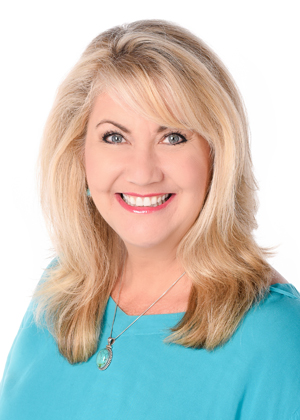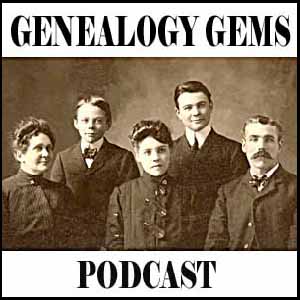by Lisa Cooke | Sep 4, 2015 | 01 What's New, Ancestry, Australian, British, Census, Church, FamilySearch, Findmypast, History, images, Military, Records & databases, United States
 Here’s our weekly list of new genealogy records online. Do any collections below relate to your family history? Please share with your genealogy buddies or with societies that might be interested!
Here’s our weekly list of new genealogy records online. Do any collections below relate to your family history? Please share with your genealogy buddies or with societies that might be interested!
AUSTRALIA WWI WOMEN. New media resources, including a television series, Facebook page and Twitter feed have been created to share more information about Australians and New Zealanders who participated in World War I, particularly women. Click here for a related blog post from The National Archives (Australia).
COLOMBIA CHURCH RECORDS. More than a million browsable records have been added to an existing database at FamilySearch, Colombia Catholic Church Records 1600-2012. “These records include: baptisms, confirmations, marriages, pre-marriage investigations, marriage dispensations, deaths, and indexes.” Some of the collection is already indexed.
ENGLAND ELECTORAL REGISTERS. Electoral registers for Manchester, England (1832-1900) are now browsable on Findmypast. Details about an ancestor’s residence and property ownership may appear.
NEW JERSEY STATE CENSUS. FamilySearch just added more than 2.7 million records from the 1915 New Jersey Census to its free online collections. These records include “the names of each member of the household, location, gender, birth date (month and year) and birthplace.” Click here learn more about this and other state censuses.
TEXAS MARRIAGE RECORDS. More than half a million indexed records have been added to an existing free database, Texas County Marriage Records 1837-1977, at FamilySearch. Covering 140 years, the records include “various types of marriage records (registers, licenses, intentions to marry, etc.) from 183 of the 254 counties in Texas.”
 Thank you for sharing these new genealogy records online with your genealogy friends and fellow society members via email and your favorite social media channels. Just use the Share buttons on this page!
Thank you for sharing these new genealogy records online with your genealogy friends and fellow society members via email and your favorite social media channels. Just use the Share buttons on this page!
by Lisa Cooke | Aug 14, 2011 |

Lisa Louise Cooke is the author of several books including The Genealogist’s Google Toolbox, 3rd edition. She produces and hosts the popular Genealogy Gems Podcast, and the free weekly YouTube show Elevenses with Lisa at the Genealogy Gems YouTube channel. She offers a Premium Membership service at her website ( https://lisalouisecooke.com ) featuring exclusive on-demand genealogy education. And she writes a regular column for Family Tree Magazine and produces the Family Tree Magazine Podcast.
Lisa found her passion for family history at her grandmother’s knee at the age of 8. She is now the owner of Genealogy Gems, a genealogy and family history multi-media company founded in 2007. She is Producer and Host of the Genealogy Gems Podcast, the popular online genealogy audio show available at www.GenealogyGems.com, on your smartphone’s native podcast app, and through the Genealogy Gems app available through app stores. Her podcast brings genealogy news, research strategies, expert interviews and inspiration to genealogists in 75 countries around the world, and has been downloaded nearly 4 million times. She also produces weekly genealogy YouTube videos on the Genealogy Gems YouTube channel and a monthly live show called Elevenses with Lisa for Premium Members.
Lisa’s offerings are not limited to online. She is a sought after international genealogy speaker. Whether in person or online, Lisa strives to dig through the myriad of genealogy news, questions and resources to deliver the gems that can unlock each genealogist’s own family history treasure trove!
Family is not just a priority professionally. Lisa is a doting wife to Bill, the proud mom of three daughters, and has added the role of Grandma to her resume. She counts her blessings every day for the love, fulfillment and laughter that family brings to every aspect of her life.
Lisa in the Press
Click here to listen to interviews and read articles about Lisa and Genealogy Gems.
by Lisa Cooke | Aug 16, 2011 |
 The Genealogy Gems Podcast Episodes
The Genealogy Gems Podcast Episodes
2008 – 2009 Season Three
Scroll to the bottom of each Podcast Show Notes Page and click the episode mp3 file to download the episode for listening. It will take a minute or two for the episode to download, and it will open in your computer’s audio program (for example: Quicktime or Windows Media Player.)
Episode 41 Listen & Show Notes
Family History Expo Wrap-Up, California Voter’s Database at Ancestry and Day of the Week Tool, Mailbox, Lulu, Valentine For You: Stories of Love
Episode 42 Listen & Show Notes
Family Tree Magazine, Genline, and another great Venice Song
Episode 43 Listen & Show Notes
Genealogy at Borders, Roots Television Interview, the new U.S. Census Bureau History Website, and Crossword Puzzle
Episode 44 Listen & Show Notes
Canadian Border Crossings, Godfrey Memorial Library, U.S. Census Bureau, and Digital Preservation Cheat Sheet
Episode 45 Listen & Show Notes
Prison stories & research, Google customization, & Free British Records
Episode 46 Listen & Show Notes
A listener’s Leatherhead, Handwriting Analysis, and Genealogy Gems Premium.
Episode 47 Listen & Show Notes
A Walk Through Childhood Memories, Family Tree and Me Displays, Girding Your Loins with James Mowatt of the Historyzine Podcast, Birthday Alarm Website, Ancestor Handwriting Analysis Winner and a new analysis of a single signature by Paula Sassi, Announcement of the NEW Family Tree Magazine hosted by Lisa Louise Cooke.
Episode 48 Listen & Show Notes
Lisa’s exclusive interview with Kathy Lennon of The Lennon Sisters. Kathy discusses her passion for family history and the Lennon family tree. Also, Paula Sassi analyzes the handwriting of our contest winner’s ancestor. Plus a new look for the Genealogy Gems Podcast Newsletter.
Episode 49 Listen & Show Notes
A great idea for genealogy societies, new Family Tree Magazine Podcast episode and Lisa’s genealogy podcasting article and videos for the magazine, Train Robbery History, Part 2 of Lisa’s interview with Kathy Lennon of the famous Lennon Sisters from the Lawrence Welk Show, Premium Discount, Handwriting Analysis opportunity and the Best Pals Contest.
Episode 50 Listen & Show Notes
The Louise Carousel, Amos Alonzo Stagg, A Little Genealogy Daydreaming with genealogy podcasters, Interview with Tim Russell of A Prairie Home Companion, America’s first radio stations, Handwriting analysis of a victim of the 1918 Spanish Flu epidemic, State Fair History, Best Pals Dolls Winner Announcement, and Upcoming Conferences.
Episode 51 Listen & Show Notes
Interview with Jim Beidler, Chairman of the FGS 2008 Conference, The History of the Ice Cream Cone, Discount on Premium Membership, Mac Minutes with Ben Sayer, The MacGenealogist, Favorite Genealogy Sayings, Census Abbreviations.
Episode 52 Listen & Show Notes
Gems From Across the Pond: Interviews with genealogy author and lecturer Rick Crume, and British Records Specialist Dr. Christopher T. Watts, and British History Podcasts.
Episode 53 Listen & Show Notes
Virginia Halloween History, Mailbox, Navy History, Interview with Yvette Arts of World Vital Records & Search Tips, Chips the U.S. War Dog, The MacGenealogist reviews iFamily for Leopard, and Name That Tune!
Episode 54 Listen and Show Notes
New podcast launch: Family History: Genealogy Made Easy, History that puts a little cash in your pocket, Interview with the Forensic Genealogist Colleen Fitzpatrick, Some Ideas on Creating family traditions and Heirlooms, The MacGenealogist, Another Linguistic History Trivia Bit, and Name That Tune Round 2!
Episode 55 Listen and Show Notes
Genealogy News, New Google Gadgets, Discover the census records you probably aren’t using, but should with Curt Witcher of the Allen County Library, Taxing Bachelorhood, and Name That Tune Round 3!
Episode 56 Listen and Show Notes
The 2009 Genealogy Gems Christmas Podcast
Episode 57 Listen and Show Notes
Frisbee & Fuller Brush History, Southern California Genealogical Jamboree, Interview with Sally Jacobs the Practical Archivist on Photo Preservation
Episode 58 Listen and Show Notes
Review of Behind the Scenes with Ancestry, Exciting New Records Online, Income Tax History, Creating a Family History Valentine, Lisa answers Listener Questions
Episode 59 Listen and Show Notes
Review of new online records, The First U.S. Presidential Photograph, Interview with Holly Hansen of Family History Expos, GenClass with Lisa Alzo, Number Please?
Episode 60 Listen and Show Notes
We celebrate the 2nd birthday of the podcast with our special guest Darby Hinton who starred in the 1960s TV show Daniel Boone. Lisa also makes recommendations to a listener on her Bristol Brick Wall.
 Here’s our weekly list of new genealogy records online. Do any collections below relate to your family history? Please share with your genealogy buddies or with societies that might be interested!
Here’s our weekly list of new genealogy records online. Do any collections below relate to your family history? Please share with your genealogy buddies or with societies that might be interested! Thank you for sharing these new genealogy records online with your genealogy friends and fellow society members via email and your favorite social media channels. Just use the Share buttons on this page!
Thank you for sharing these new genealogy records online with your genealogy friends and fellow society members via email and your favorite social media channels. Just use the Share buttons on this page!

 The Genealogy Gems Podcast Episodes
The Genealogy Gems Podcast Episodes